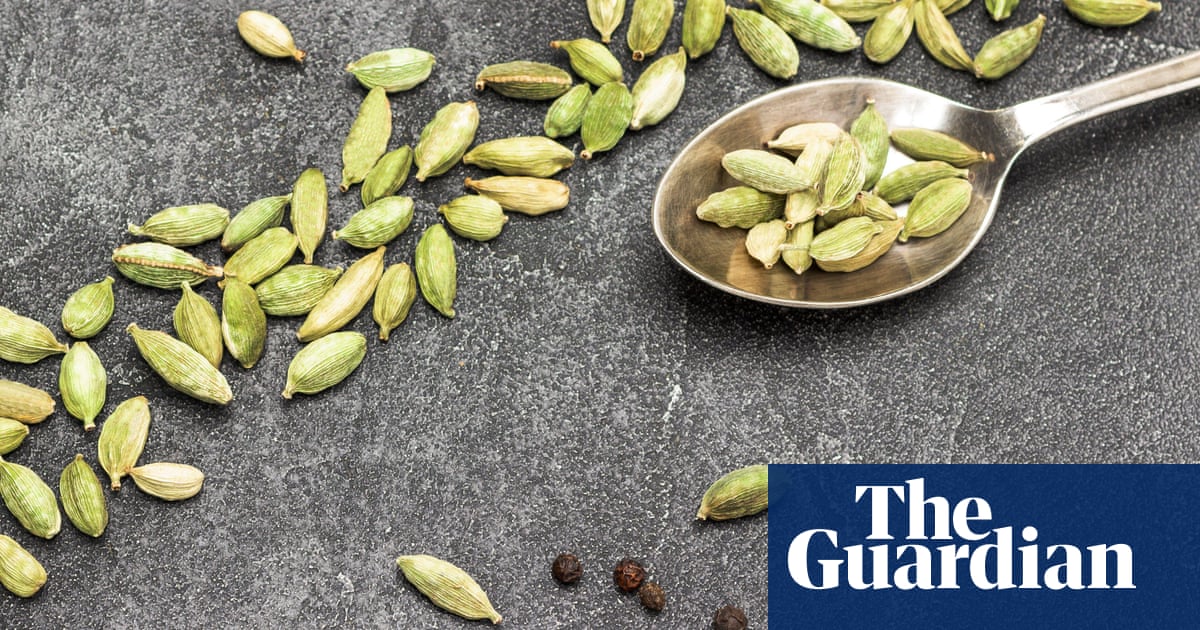What’s the difference between green and black cardamom, and when should I use pods or ground?“Cardamom is my favourite spice,” saysCynthia Shanmugalingam, chef/proprietor ofRambutanin London. “It smells like childhood puddings and sweets.” That’s not to say the papery pods filled with black seeds aren’t versatile, mind. Yes, cardamom can bring a “piney, eucalyptus-like fragrance and warmth” to desserts, Shanmugalingam adds, but it also “adds depth” to savoury dishes, meaning you can take it in multiple directions.
With its origins in southern India and a relative of ginger, cardamom pods commonly come in green and black (also known as brown) form, as well as red (used mainly in Chinese and Asian cuisines) and white, which are bleached green pods. While Roopa Gulati, author ofIndian Kitchens: Treasured Family Recipes from Across the Land, often uses both black/brown and green in the same dish, she says you “have to be aware that they are totally different in flavour. You’re not going to make a lovely, aromatic rice pudding and stick some brown cardamom in it, because that will override all the other flavours.”
That’s because black cardamom is earthy, smoky and more robust than its green relative, which is why Gulati puts it to work in the likes of meaty curries, lamb pilaf and rice dishes, as well as in garam masala: “It has a good, solid base note.” The Kashmiri stockyakhniis a good example: “That has loads of spices in it, but if you also chuck in a couple of brown cardamom pods, it just gives it that extra layer.” That’s not to say the bolder brown cardamom should stay in its lane, though: “It can also go with sweet things such as dates,” Gulati adds. As for red cardamom, which is similar in taste to brown, “in India, we don’t cook with it, but it’s interchangeable with brown, though our homegrown brown cardamom is a bit more pungent!”
Green cardamom, meanwhile, is “quite fresh and citrussy”, so Gulati uses that in cake batters and desserts, such as rice pudding: “I’ll sometimes put green cardamom pods in a pan of milk and simmer to infuse.” And while Shanmugalingam is a fan of the lighter, sweeter spice inwatalappan(a Sri Lankan coconut caramel pudding), she’ll also put it to work in pilafs and biryanis, dals and marinades for chicken. Finally, with white cardamom, which is the more mellow of the bunch, again think creamy desserts and cakes.
As for using whole pods versus grinding the seeds inside, Shanmugalingam leans towards the former, because, she says, “they retain flavour better and infuse sweet rice pudding and curries really well”. If you’re after something punchier, meanwhile, Gulati’s top tip is to drop the pods into hot oil: “Their volatile oils are released and you get a stronger flavour; always pierce the pod first, though, otherwise it might explode.”
Ground cardamom, meanwhile, works best in cakes and marinades, Shanmugalingam says, although the process of grinding those seeds is, Gulati admits, “a real pain in the neck”. To grease the wheels, she suggests adding a pinch of caster sugar to proceedings: “It acts as an abrasive, so makes it much easier and quicker to pound with a pestle.” Thankfully, a little goes a long way, and always remember that freshness is key: “Once you’ve ground the seeds, use them quite quickly,” Gulati says, “otherwise they’ll turn musty.”
Got a culinary dilemma? Emailfeast@theguardian.com
